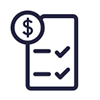No matter your financial situation, it’s always good to find ways you can save money. Do you have an upcoming necessary expense that you need to start planning for? Is it finally the time to take that trip you’ve wanted to go on, and want to use your credit card to book airfare and your hotel? Do you want to be prepared with an emergency fund. No matter your financial goal, there are plenty of methods for saving money fast.

How to Save Money Fast
Last Updated: November 12, 2024
5 min read
Next steps

See if you're pre-approved

View all Discover credit cards
See rates, rewards and other info
You may also be interested in
Was this article helpful?
Was this article helpful?
-
Legal Disclaimer: This site is for educational purposes and is not a substitute for professional advice. The material on this site is not intended to provide legal, investment, or financial advice and does not indicate the availability of any Discover product or service. It does not guarantee that Discover offers or endorses a product or service. For specific advice about your unique circumstances, you may wish to consult a qualified professional.


